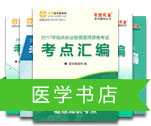General health issues
A global strategy on occupational health was formulated, and country activities supported. Guidelines and monographs were produced on such subjects as the health implications of occupational exposure to organic dust and sensitizing agents as well as selected metals, solvents and pesticides. Since 1976 WHO has evaluated the health risks posed by exposure to some 200 industrial chemicals and other substances. An international collaborative oral health research initiative is being set up in collaboration with the International Dental Federation among others. An international action network was established on noma and other mutilating diseases and accidents of the face. Significant progress was made in meeting the rehabilitation needs of the 35 million persons with disabilities in Africa, using the community-based district health approach. WHO's global data on blindness were updated. Training and research in this field is supported by WHO jointly with NGOs. Quality standards were prepared for small-scale manufacturers of intraocular implants used in cataract surgery.
As a part of activities to promote healthy lifestyles, a school health education resource centre and databases were established as well as two regional networks of health promoting schools. The regions for health network in Europe was expanded to include 20 regions. National tobacco control programmes are supported. Recent Winter Olympic events have been smoke-free, thanks to collaboration between the International Olympic Committee and WHO.
WHO provides countries with information and guidelines on the organization of health systems based on primary health care. Technical guidance is given on the formulation of new health policies and strategies and the reorganization of health care financing systems.
WHO promotes information exchange between countries in relation to the development of human resources for health. It has launched an initiative to determine optimum approaches to the training of health personnel under changing socioeconomic conditions. Reviews of public health training and medical education are supported. Fellowships are provided for training in many health and related fields. National, regional and interregional action plans for upgrading nursing and midwifery practice are being drawn up through a network of WHO collaborating centres.
In the field of pharmaceuticals guidelines for drug prescribing are being expanded. National systems for drug registration, surveillance and quality assurance are being established in a number of countries with WHO collaboration. The WHO model list of essential drugs is being revised and updated. Working with bilateral agencies, other United Nations bodies and NGOs, WHO collaborates with 55 countries in framing national policies in such areas as drug selection and legislation. Operational research is carried out on the rational use of drugs. Guidelines, tools and training materials have been prepared on many aspects of drug management.
The WHO Global Commission on Women s Health has drawn up an agenda for action relating to women, health and development. Under the auspices of the commission, a scheme to provide credit and banking facilities to the most vulnerable and disadvantaged is being implemented in Africa. At the 1994 International Conference on Population and Development in Cairo, WHO played a key role in helping to reach a consensus and transcend political and religious differences. This was made possible by the Organization s medical and ethical credibility and its inclusive approach to health.
Together with UNDP, WHO promotes recognition of health and environment concerns in national plans for sustainable development and has given financial and technical support to six countries for this purpose. WHO has been designated task manager for the 'health chapter' of the 1992 United Nations Conference on Environment and Development (UNCED). In collaboration with several United Nations bodies it has prepared a progress report on health, environment and sustainable development, stressing the importance of reform with respect to community development, environmental health, national decision-making and national accounting. Materials produced by WHO included guidelines on the operation of poisons control facilities, 15 health and safety guides, and over 200 international chemical safety cards providing basic information on the diagnosis and treatment of poisonings. Training and research on the broad topic of health and environment are supported.
WHO worked with 26 countries in greatest need in planning and implementing health reforms as part of an overall effort for strengthening of national managerial capabilities. A third report on progress towards health for all by the year 2000 was prepared for submission to the WHO governing bodies in 1995. Research on health futures was organized; and assessment of the global health situation and trends in priority diseases and conditions continued. A total of 184 nongovernmental organizations are now in official relations with WHO. The growing awareness among Member States of the need to improve health care delivery systems, and a notable interest on the part of the World Bank to promote improvements in the social sector, provided a timely opportunity to forge closer links between WHO, the Bank and governments. Collaboration was also strengthened with the five major regional development banks. The traditional good working relations with UNICEF, UNFPA, FAO, ILO and UNESCO continued.
WHO continues to strengthen national capacity for emergency preparedness and relief. Technical expertise and emergency medical supplies were provided to a number of countries including Afghanistan, Angola, Burundi, Iraq, Rwanda, Somalia, Sudan and some new independent states in 1994. WHO cooperated closely with the European Union on assistance for the countries of former Yugoslavia. Ten joint missions were undertaken with WFP for the organization of food aid in support of human resources development.
Handbooks and guidelines in different fields of health technology were produced. Progress was made in developing portable laboratory instruments, solar-run equipment and other types of appropriate technologies.
Up-to-date, authoritative health information is provided to all Member States through a large number of publications, a series of widely-distributed periodicals, electronic networks and library services. WHO facilitates access by countries to a number of databases containing information on such subjects as communicable diseases and HIV/AIDS. For many health workers in developing countries, WHO materials are often the only source of reliable information on health.
Charting the future
By the end of the 20th century we could be living in a world without poliomyelitis, a world without new cases of leprosy, a world without deaths from neonatal tetanus and measles, a world without dracunculiasis. In 1993 measles killed nearly 1.2 million children and infected more than 45 million; poliomyelitis killed 5 500 children and as of that year 10 million people were disabled; leprosy killed 2 400 people and infected 600 000; neonatal tetanus killed 560 000 newborn babies; dracunculiasis infected 2 million people. form www.med66.com
By the end of the century maternal mortality could be half what it was in 1993, when more than 500 000 women died in childbirth. Infant mortality rates could be no higher than 50 per 1 000 live births. At least 70 countries had higher rates than this in 1993. By 2000 mortality of children under 5 years could be no more than 70 per 1 000 live births. At least 60 countries had higher rates than this in 1992. We could be living in a world where less than 10% of babies are born weighing under 2.5 kg. In 1990, 17% of babies were born below this weight. For babies born at the beginning of the 21st century life expectancy could be at least 60 years in every country of the world. In 1993, 50 countries were below this target.
In the year 2000 at least 85% of the world s population could be within one hour s distance of medical care. In 1993, about 1 billion people had no access to local health services within a one-hour journey. Deaths from malaria could be cut by a fifth in at least 75% of affected countries; the number of deaths and new infections from tuberculosis could be substantially reduced; the number of new carriers of hepatitis B could fall by 80% as a result of childhood vaccination; deaths from heart disease in people aged under 65 could be reduced by at least 15%; all pregnant women could have proper care.
The year 2000 could see a world where malnutrition among children under 5 years will fall by 50%; where micronutrient deficiencies from vitamin A and iodine will be eliminated; where the prevalence of iron deficiency anaemia in women of childbearing age will be reduced by 33%; and where 85% of the population will have access to safe water and 75% to safe sewage disposal.
These are neither utopian goals nor na?ve wishes for a perfect world. They are achievable - provided the world cares enough and the necessary resources are made available. WHO sees four main priorities for action in the future.
The first priority is to ensure 'value for money' by using the available resources as effectively as possible and redirecting them to those who need them most. The aim is to create self-help environments in which men and women can solve their own problems, establishing and sustaining a development process that will ensure a brighter future for their children.
The second priority is poverty reduction through better health. Investing in health saves money as well as lives. It must be accepted that expenditure on health is not a drain on national resources but a prerequisite for economic and social progress. Poor health inhibits an individual s ability to work, reduces earning capacity and deepens poverty. Poverty should thus be tackled on two fronts: one to meet people s basic minimum needs including access to health services, housing and education; the other to provide opportunities for people to earn their way out of poverty through better health and increased productivity. In addition to the economic aspect there is another side to poverty which must be corrected - social discrimination and low status for some groups, particularly women.
The third priority relates to public health policy, which in the decade of the 1990s has been influenced not only by the health-for-all movement, with its emphasis on equity, but also by political and economic changes in the world at large. At the same time it is recognized that ensuring equal access to health care, a traditional goal of public health authorities, will not necessarily reduce gaps in health status insofar as disease is determined by individual behaviour and by the working and living environment. Any genuine improvement in health will thus call for integrated, intersectoral action in addressing all the determinants of ill-health. The training of health professionals will have to be reoriented accordingly.
The fourth priority is to strengthen national capabilities for emergency relief and humanitarian assistance in the health sector. The new policy of 'emergency management for sustainable development' will provide a bridge between relief work and development proper, the aim being to reduce human suffering and economic loss due to epidemics, complex emergencies and mass population displacements.
The health problems of the future are awesome. Yet much can be done to tackle them with what we know already. In order to succeed the world will have to care more, and try harder, but the situation is not hopeless. Martin Luther King, writing about the civil rights struggle in the United States in the 1960s, said:'We shall have to repent in this generation, not so much for the evil deeds of wicked people, but for the appalling silence of the good people'.
Today, as a new generation approaches a new century, it is time for the appalling silence over global health inequities to be broken.
The evolution of WHO
The first World Health Assembly, held in June 1948 and attended by 53 delegates from WHO's 55 Member States, approved a programme of work that listed its top priorities as malaria, maternal and child health, tuberculosis, venereal diseases, nutrition and environmental sanitation.
Today, 47 years later, in spite of significant improvements in human health, great burdens of suffering and disease are still with us. Half a century of lessons learned in eradicating and controlling diseases, expanding health care coverage and making the best use of available resources have guided the world community, including WHO, on the way to further progress.
The need for a world health organization
At the end of the second world war the majority of the world's people were still living in extreme poverty and suffering from chronic malnutrition, communicable diseases and parasitic infections to name a few. Many existing health services were severely disrupted and huge segments of the population were excluded from them. The imperative need was therefore recognized for a new world body capable of grouping resources for health, concerting health goals and providing a forum for the exchange of health information. The result was the setting up by the United Nations of a specialized agency to fulfil that need - the World Health Organization.
Declaring war on disease
WHO's first two decades were dominated by mass campaigns to control diseases such as leprosy, malaria, smallpox, syphilis, tuberculosis and yaws. Between 1950 and 1965, for instance, 46 million patients in 49 countries were successfully treated with penicillin against the tropical disease yaws, making it no longer a significant public health problem in most of the developing world. By 1955 the number of malaria cases worldwide had dropped by at least one-third; but by 1970 eradication of the disease was seen to be impracticable.
The same was not true of smallpox. An eradication campaign that began in 1966, when up to 2 million people a year were dying of smallpox, ended in 1980, when the disease had disappeared from the face of the earth.
These mass campaigns against single diseases gave way to WHO's Expanded Programme on Immunization aimed at protecting by the year 2000 all children against six vaccine-preventable diseases - measles, diphtheria, pertussis, tetanus, poliomyelitis and tuberculosis. Global coverage with the vaccines reached its peak in 1990, when the goal of immunizing 80% of all children by the age of 1 year was achieved. The long-term goal of the multiagency children s vaccine initiative, launched in 1990, is to achieve a world in which all people at risk are protected against vaccine-preventable diseases, if possible by means of a single procedure.
Health for all
In 1979 the World Health Assembly unanimously endorsed the Declaration of Alma-Ata, which stated that primary health care was to be the key to attaining the goal of health for all by the year 2000.
Consequently global targets for health were established and have since been the norms against which all health development efforts have been measured. The strategy of health for all has been endorsed at the highest political level, but a gap remains between what is preached and what is practised.
Setting the standards
The establishment of standards in such fields as vaccines, drugs and laboratory tests has been a permanent part of WHO's work. The WHO Expert Committee on Biological Standardization has met every year since 1951 to formulate standards which are recognized worldwide. The scientific credibility of WHO provides a guarantee that everyone accepts.
Training physicians, raising the standards of medical schools in developing countries and helping countries organize schools for nurses and midwives has also been a permanent feature of WHO's work. The concept of primary health care has switched much of the emphasis to training directed towards a wide range of health care workers at community level, particularly in developing countries, rather than towards health professionals as such.
The way ahead
WHO's general programmes of work, now covering periods of six years, set out principles and policies for the functioning of the Organization. They also provide a framework for detailed workplans and budgeting. Over the years the programmes have responded to, and often anticipated, the major health concerns of Member countries. The ninth programme (1996-2001) fixes goals and targets for WHO's global health action. It focuses on lessening of inequities in health, control of rising costs, the eradication or elimination of selected infectious diseases, the fight against chronic diseases, and the promotion of healthy behaviour and a healthy environment.
The challenge for the future is to mobilize WHO's Member States to adopt policies and plans that will guarantee the provision of comprehensive integrated health services for all.










 扫一扫立即下载
扫一扫立即下载


